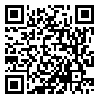Volume 28 - Supplementary
IBJ 2024, 28 - Supplementary: 440-440 |
Back to browse issues page
Download citation:
BibTeX | RIS | EndNote | Medlars | ProCite | Reference Manager | RefWorks
Send citation to:



BibTeX | RIS | EndNote | Medlars | ProCite | Reference Manager | RefWorks
Send citation to:
Rezaian Abarqui A, Vafaeenasab M, Pashmchi M, Vakili M, Khatibi A. Restoring Shoulder Function: A Randomized Clinical Trial of TECAR Therapy for Frozen Shoulder. IBJ 2024; 28 :440-440
URL: http://ibj.pasteur.ac.ir/article-1-4878-en.html
URL: http://ibj.pasteur.ac.ir/article-1-4878-en.html
Atefeh Rezaian Abarqui 
 , Mohammadreza Vafaeenasab
, Mohammadreza Vafaeenasab 
 , Mohammad Pashmchi
, Mohammad Pashmchi 
 , Mahmood Vakili
, Mahmood Vakili 
 , Amidodin Khatibi *
, Amidodin Khatibi * 


 , Mohammadreza Vafaeenasab
, Mohammadreza Vafaeenasab 
 , Mohammad Pashmchi
, Mohammad Pashmchi 
 , Mahmood Vakili
, Mahmood Vakili 
 , Amidodin Khatibi *
, Amidodin Khatibi * 

Abstract:
Introduction: Adhesive capsulitis, known as frozen shoulder, is an inflammatory condition characterized by stiffness and shoulder pain. Various physiotherapy interventions, such as heat or ice, ultrasound therapy, transcutaneous electrical nerve stimulation (TENS), and laser therapy, are employed to manage this condition. Tecar therapy, which utilizes high-frequency electromagnetic currents (0.3-1.2 MHz), has recently gained attention for treating musculoskeletal disorders.
Methods and Materials: This clinical trial was conducted to evaluate the effectiveness of Tecar therapy in treating frozen shoulders in patients referred to Shahid Sadoughi Rehabilitation Clinic in Yazd. Patients with shoulder pain for at least one month before referral, along with restricted passive shoulder joint movement compared to the opposite shoulder and a confirmed frozen shoulder diagnosis, were included in the study. Thirty patients were randomly assigned to the treatment or control groups, each comprising 15 participants. The treatment group received Tecar therapy three times a week for six weeks, along with NSAIDs and topical ointment, while the control group received only NSAIDs and topical ointment. Pain intensity was measured using the Visual Analog Scale (VAS) at the beginning of the study and again at the end of the third and sixth weeks. Additionally, the Shoulder Pain and Disability Index (SPADI) and limitations in flexion, abduction, and external rotation movements were assessed at these time points.
Results: At the beginning of the study, there was no significant difference in shoulder pain between the two groups. However, shoulder pain significantly decreased in both groups following treatment (p = 0.001). The effect of time and group interaction was statistically significant (p = 0.004). By the sixth week, the average shoulder dysfunction scores were 24.83 ± 11.14 in the Tecar therapy group and 33.4 ± 8.1 in the control group, showing a significant difference (p = 0.024). Similarly, the average SPADI scores in the Tecar therapy and the control groups were 23.3 ± 8.56 and 30.57 ± 10, respectively, with a significant difference (p = 0.024). SPADI scores significantly decreased over time in patients with frozen shoulders (p = 0.001), and the interaction between time and group was statistically significant (p = 0.001). The mean VAS scores also showed a significant difference between the two groups by the sixth week (p = 0.04), significantly decreasing over time (p = 0.001).
Conclusion and Discussion: The significant reduction in shoulder pain and dysfunction observed in the Tecar therapy group over six weeks and six weeks highlights its potential as a beneficial treatment modality. Tecar therapy patients experienced more significant improvements in shoulder function and reported less pain than those receiving standard treatment. These findings suggest that incorporating Tecar therapy into the treatment regimen for frozen shoulder could enhance patient outcomes.

Methods and Materials: This clinical trial was conducted to evaluate the effectiveness of Tecar therapy in treating frozen shoulders in patients referred to Shahid Sadoughi Rehabilitation Clinic in Yazd. Patients with shoulder pain for at least one month before referral, along with restricted passive shoulder joint movement compared to the opposite shoulder and a confirmed frozen shoulder diagnosis, were included in the study. Thirty patients were randomly assigned to the treatment or control groups, each comprising 15 participants. The treatment group received Tecar therapy three times a week for six weeks, along with NSAIDs and topical ointment, while the control group received only NSAIDs and topical ointment. Pain intensity was measured using the Visual Analog Scale (VAS) at the beginning of the study and again at the end of the third and sixth weeks. Additionally, the Shoulder Pain and Disability Index (SPADI) and limitations in flexion, abduction, and external rotation movements were assessed at these time points.
Results: At the beginning of the study, there was no significant difference in shoulder pain between the two groups. However, shoulder pain significantly decreased in both groups following treatment (p = 0.001). The effect of time and group interaction was statistically significant (p = 0.004). By the sixth week, the average shoulder dysfunction scores were 24.83 ± 11.14 in the Tecar therapy group and 33.4 ± 8.1 in the control group, showing a significant difference (p = 0.024). Similarly, the average SPADI scores in the Tecar therapy and the control groups were 23.3 ± 8.56 and 30.57 ± 10, respectively, with a significant difference (p = 0.024). SPADI scores significantly decreased over time in patients with frozen shoulders (p = 0.001), and the interaction between time and group was statistically significant (p = 0.001). The mean VAS scores also showed a significant difference between the two groups by the sixth week (p = 0.04), significantly decreasing over time (p = 0.001).
Conclusion and Discussion: The significant reduction in shoulder pain and dysfunction observed in the Tecar therapy group over six weeks and six weeks highlights its potential as a beneficial treatment modality. Tecar therapy patients experienced more significant improvements in shoulder function and reported less pain than those receiving standard treatment. These findings suggest that incorporating Tecar therapy into the treatment regimen for frozen shoulder could enhance patient outcomes.

| Rights and permissions | |
 |
This work is licensed under a Creative Commons Attribution-NonCommercial 4.0 International License. |





.png)
